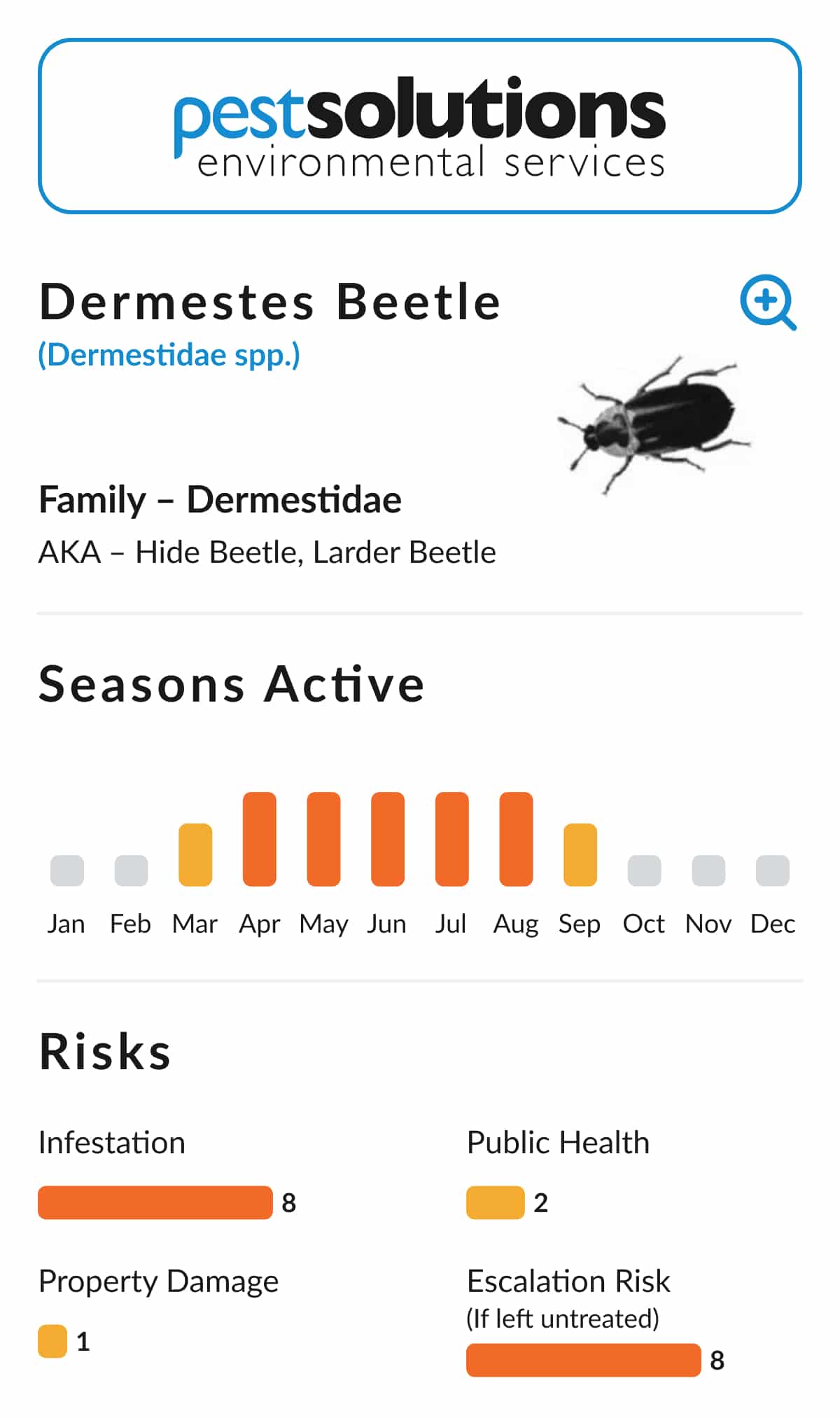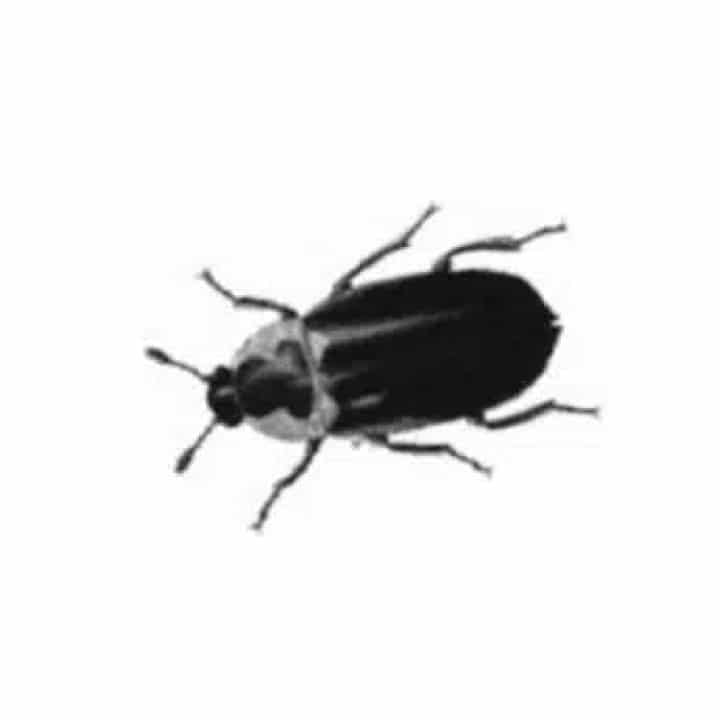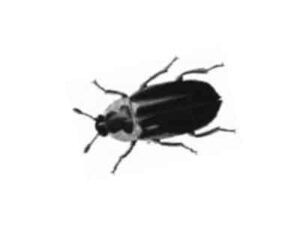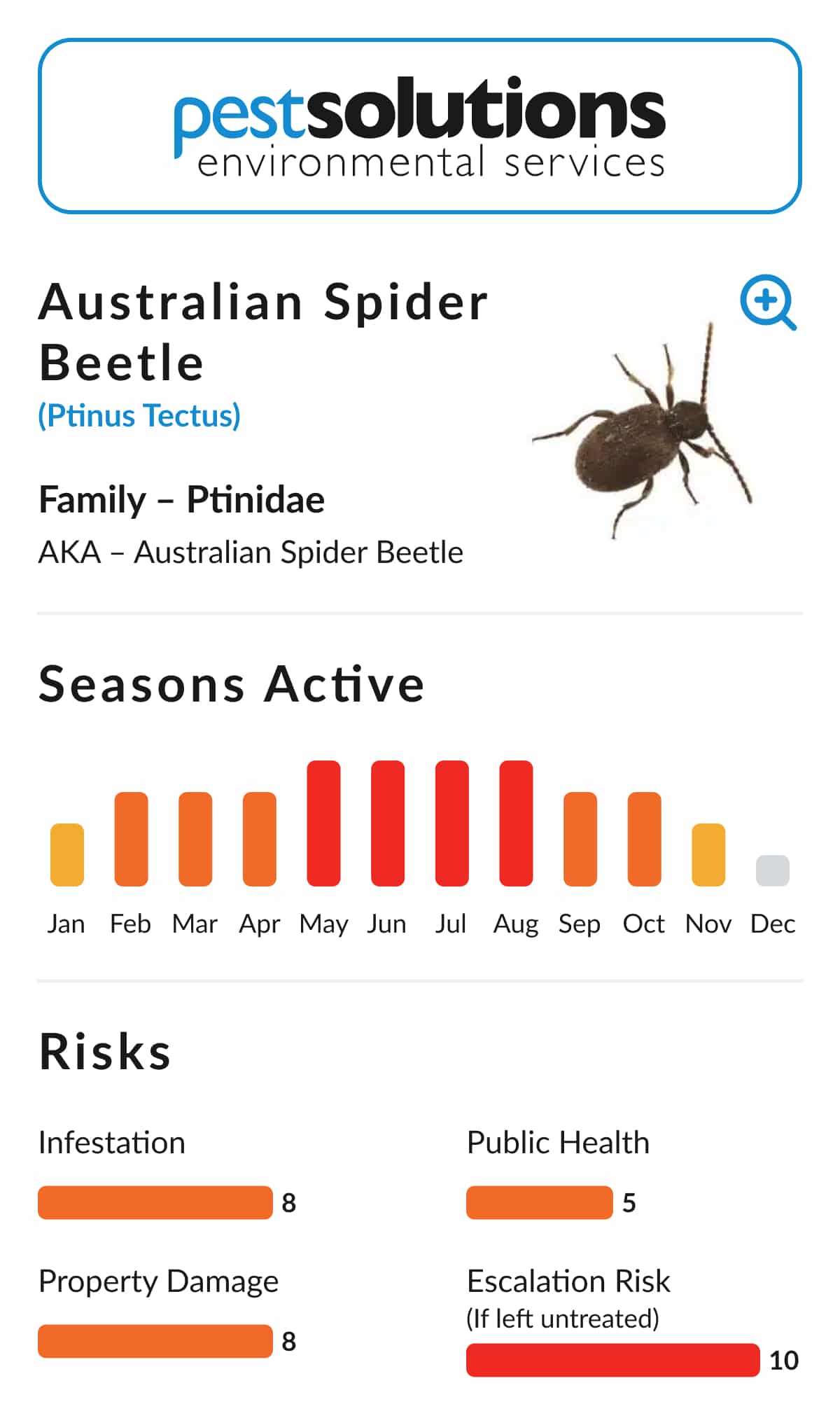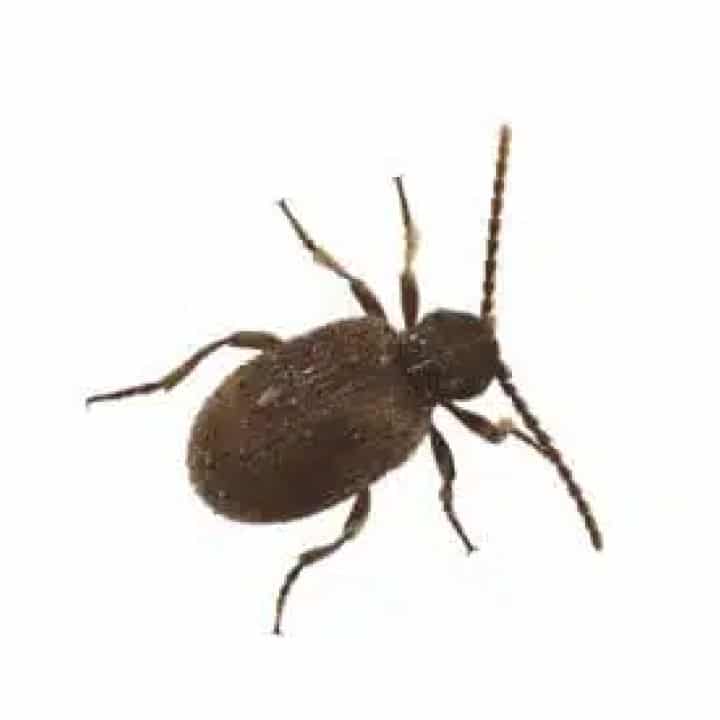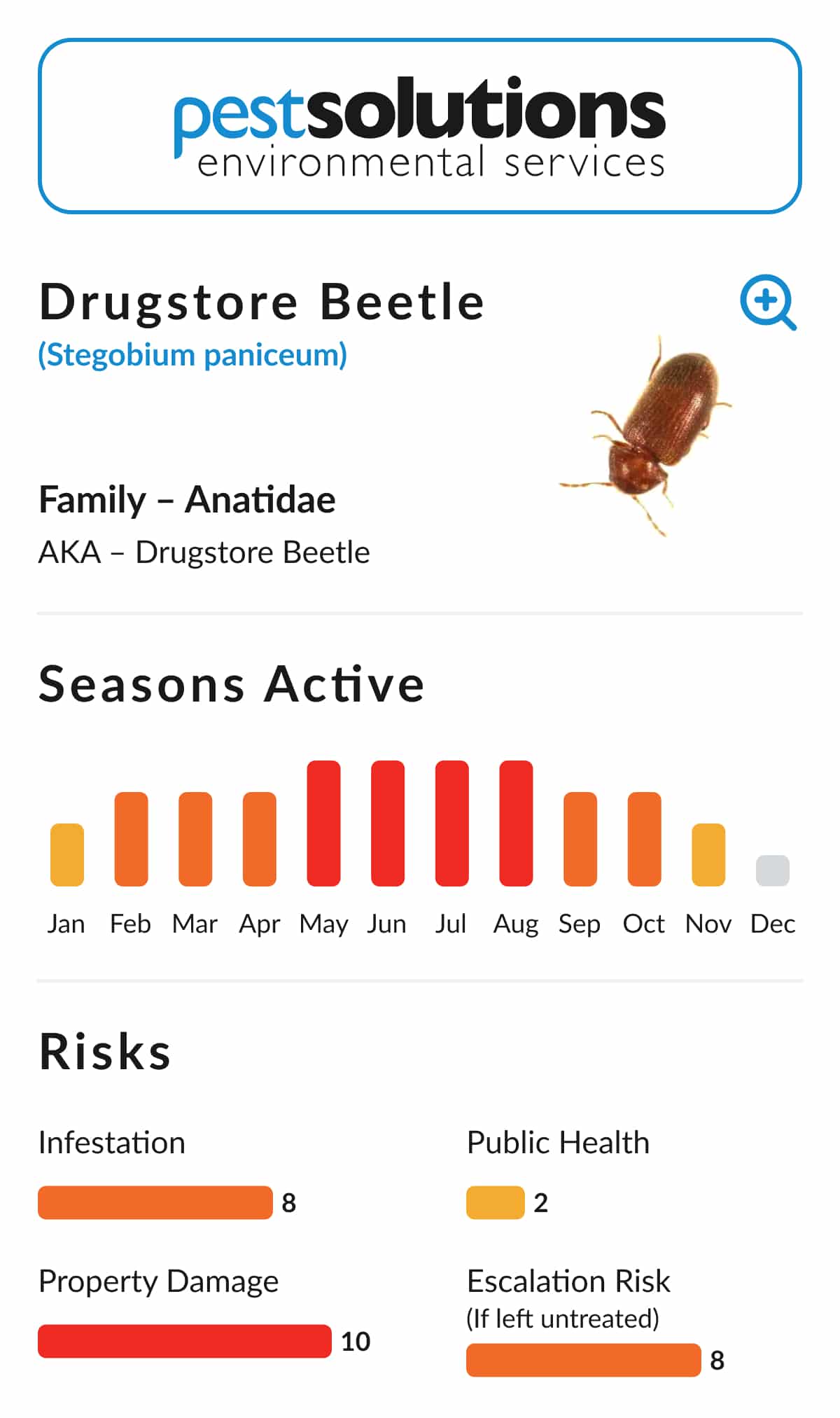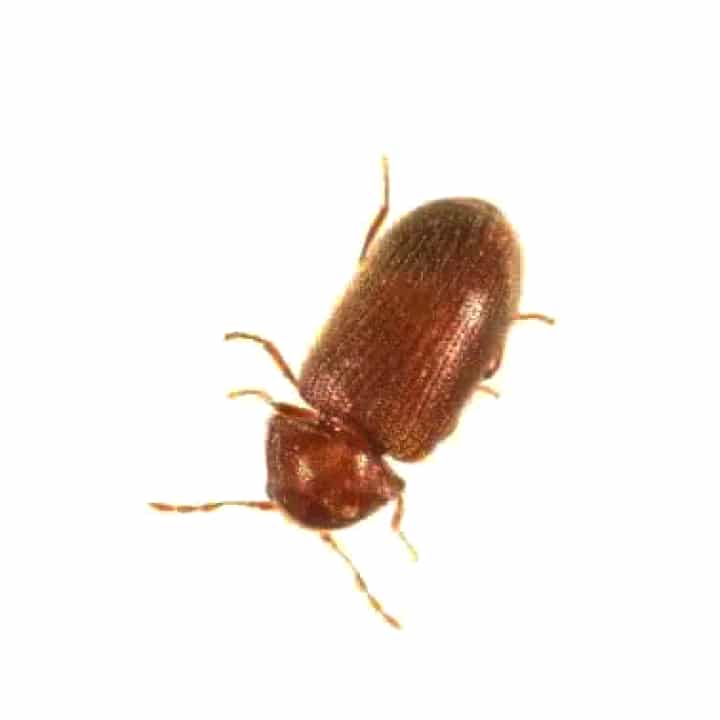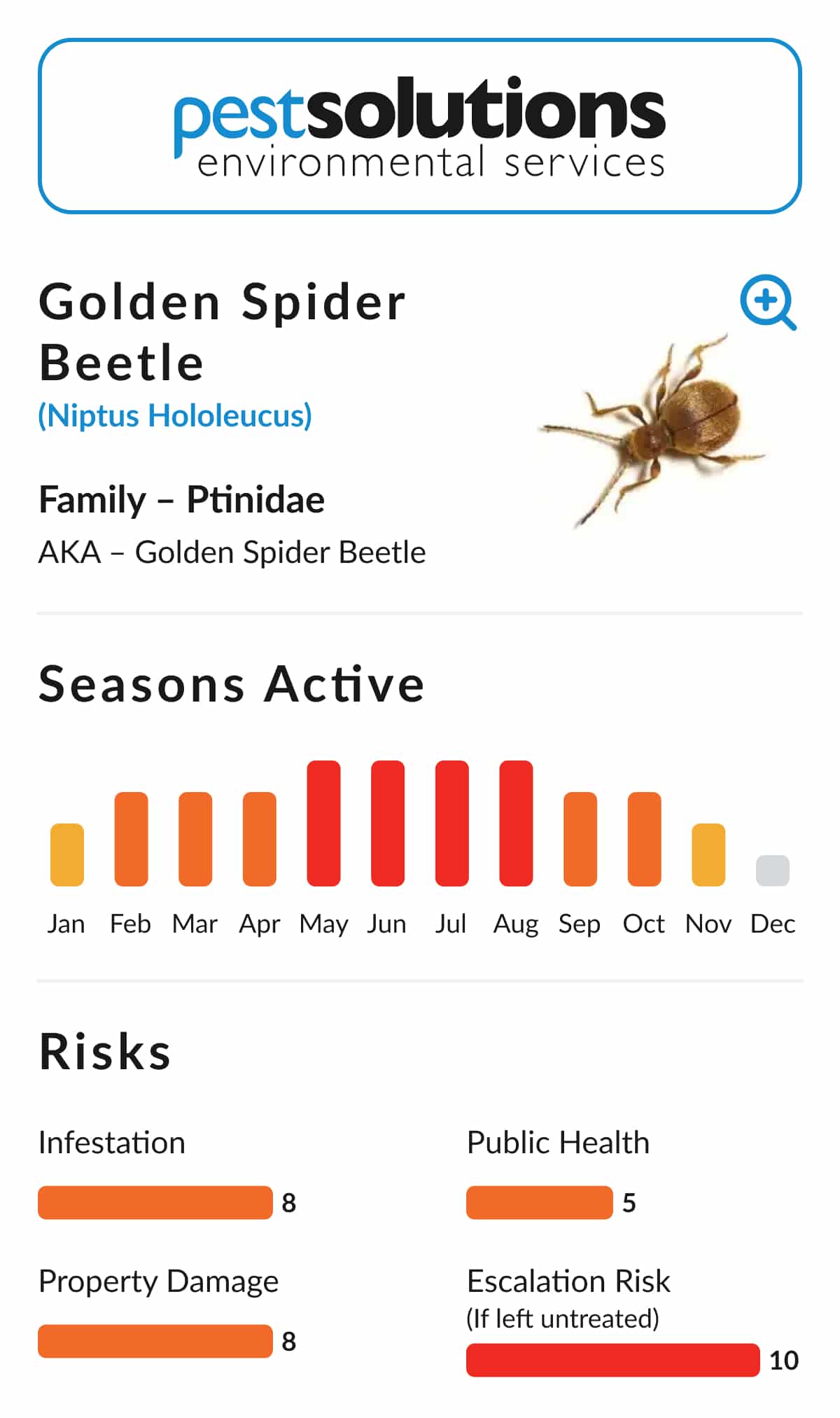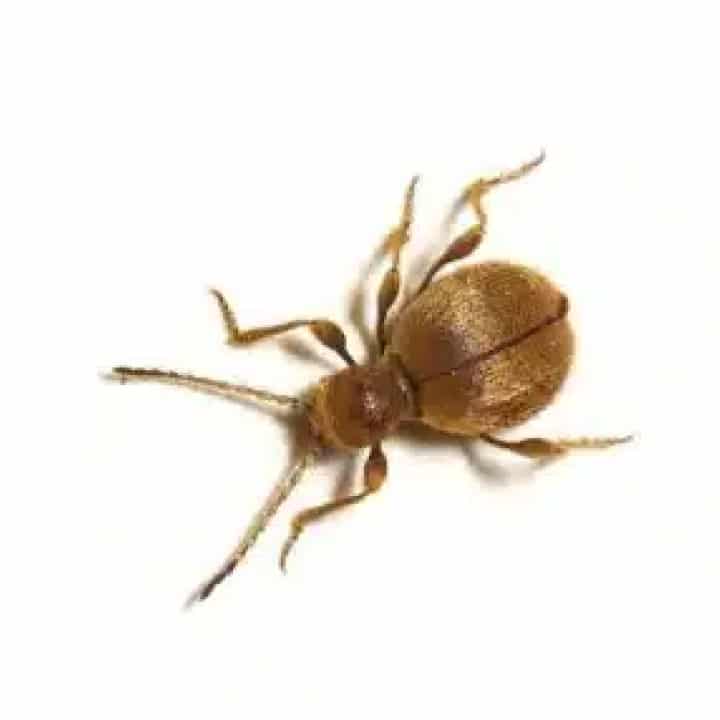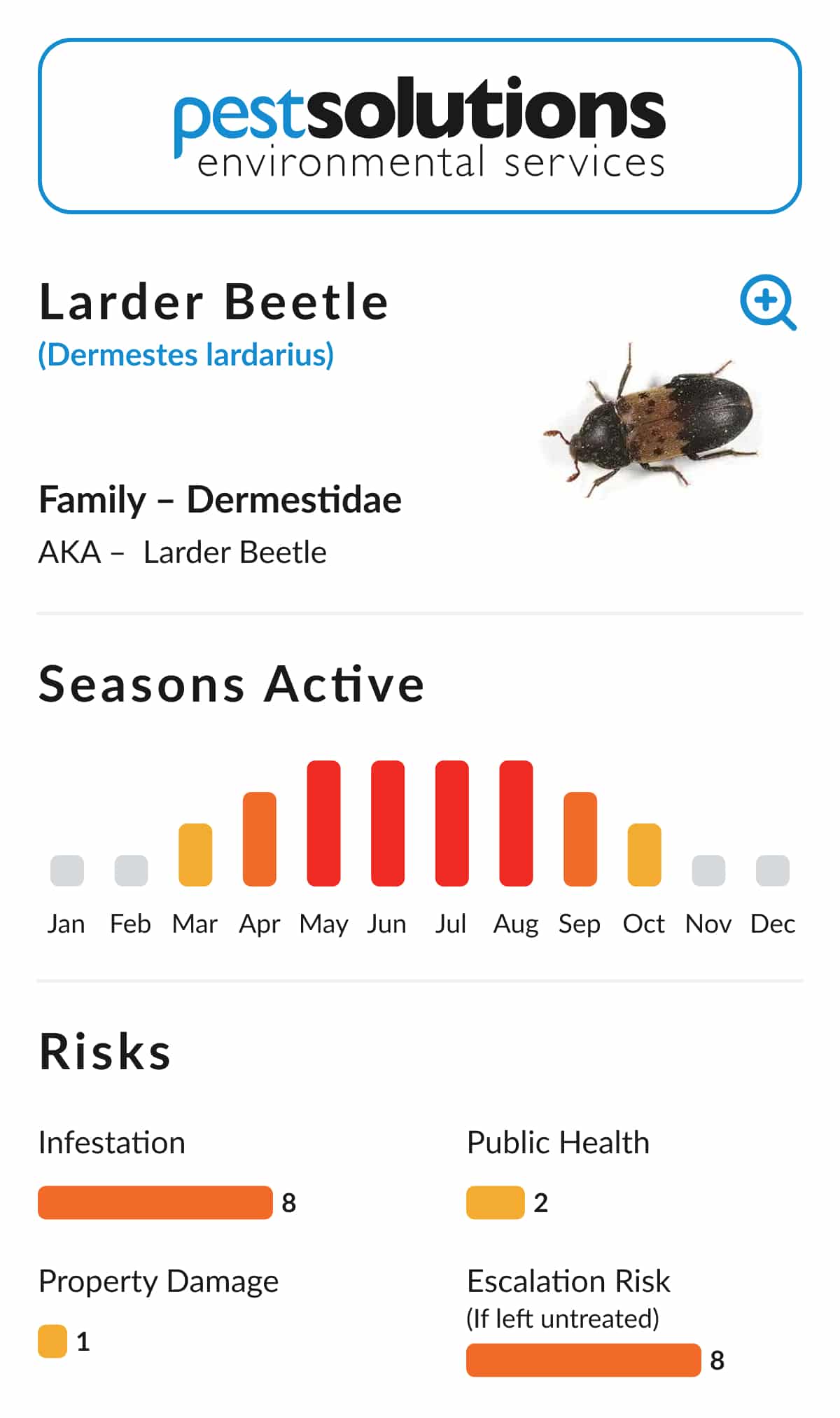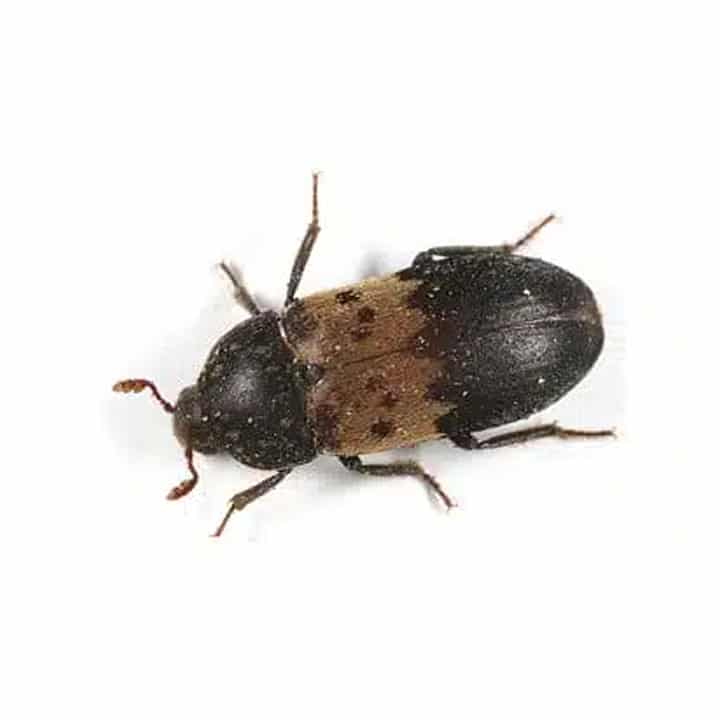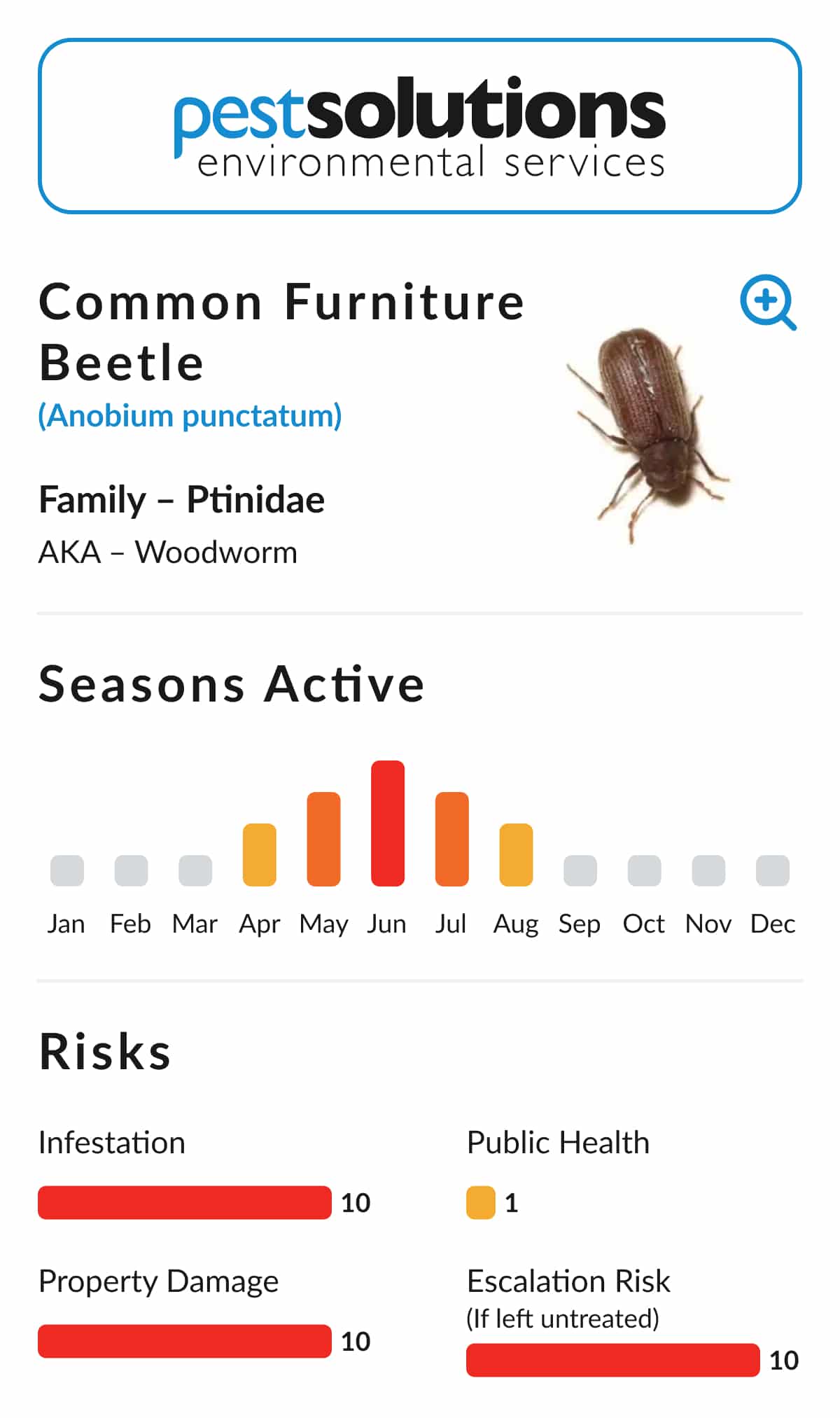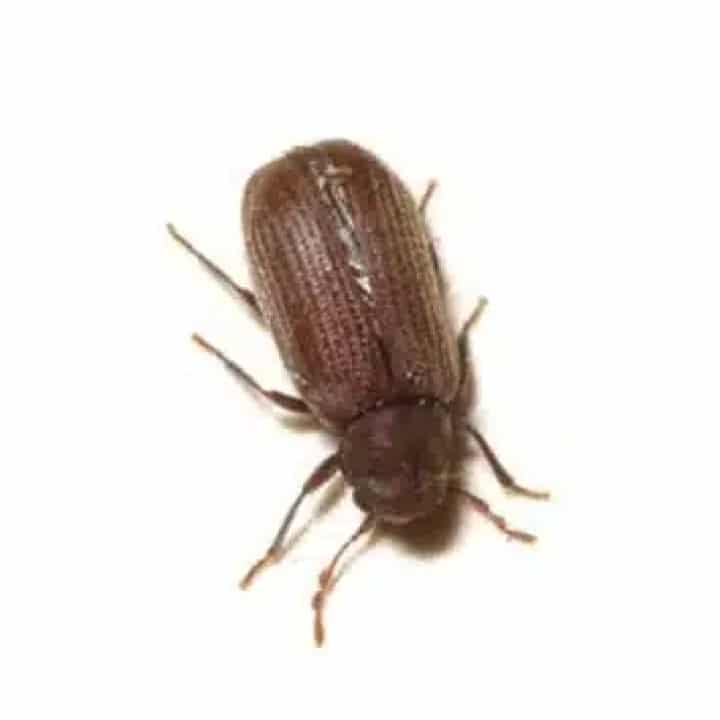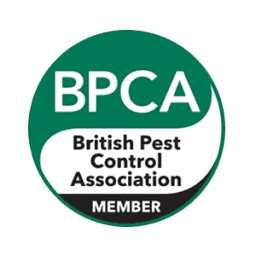Key Facts About Dermestes Beetles
When we refer to Dermestes Beetles, we are actually talking about a larger group encompassing a number of subspecies, three of which are often found in the UK. These are Larder beetles, Black Larder beetles, and Hide Beetles. As well as all belonging to the Dermestidae insect family, they are also closely related to the carpet beetle, a pest insect species which is much more common here.
Dermestes beetles are one of the few insect species where the larvae are actually larger than the mature adult beetles. These larvae are coloured red or reddish-brown and covered in small hairs of the same colour. The adult beetles, meanwhile, vary in appearance depending on the subspecies. As the name suggests, the black larder beetle is completely black in colour, whereas larder beetles have a yellow band across the middle of their bodies, with three black spots forming a triangle shape within this band. Finally, the hide beetle is shorter and wider than larder beetles, more closely resembling a scarab beetle, and with bumpy protrusions on its back.
Dermestes beetles mostly feed on animal protein, and as such, they pose a significant risk in areas such as silkworm farms or natural history museums. However, an infestation may occur anywhere that such protein can be found. They often target leather and animal hides, as well as dry pet foods and the feathers inside pillows and cushions. If large numbers of dead insects are allowed to build up in an area, then this may well attract an infestation of dermestes beetles.
When there is no other food available, dermestes beetles will potentially feed on any high-protein plant matter that they can find. However, this is only a last resort for these pests, as their diet requires more protein than they could receive from such plants in the long-term. More commonly, they will gather in areas with existing pest problems, allowing them to feed on the carcasses of these other pest insect species. For instance, larder beetles are often found inside food storage warehouses, but they will rarely eat any of the produce there. Instead, they will seek out insects that are already present, and use them as a direct food source.
Dermestes Beetles (Dermestes spp) Significance of Control
Dermestes beetles can cause major issues in kitchens, both in domestic properties and businesses. They tend to congregate near where food is stored and prepared. In addition, they also commonly thrive in chicken coops and pig farms, where large amounts of organic waste are available for them to feed on.
Where dermestes beetle infestations affect kitchens, this is usually down to the fact that proper hygiene procedures have not been followed. The beetles will feed opportunistically, so if food scraps are left lying around, this may well attract such pests. What’s more, adult dermestes beetles can easily fly from one area to another, and like many insects are attracted to light. They will therefore seek out buildings and make their way inside, and if they find a readily-available food source, they will quickly cause an infestation inside kitchens or food outlets.
Dermestes larvae can also cause some serious problems inside buildings, too. When it is time for them to pupate in order to grow into adult beetles, they will seek out a safe place to do so. This often means they will dig their way into any relatively hard substances they can find, including plaster and wood. This will cause unsightly holes in the affected area, and in extreme cases could even lead to structural damage.
While dermestes beetles are largely regarded as pests, there are occasions when humans can instead put them to good use. Since they will meticulously pick over any food source to eat up every last scrap of animal protein, they are sometimes used in museums to clean bones. Unlike cleaning products, which are commonly acidic and can therefore cause some damage to the bones themselves, these beetles assiduously eat away any remaining particles of flesh or bone marrow, leaving behind a clean, undamaged bone ready for preservation.
Call Pest Solutions to Get Rid of That Pest Today!
Pest Solutions skilled BPCA accredited team of service experts and support staff are here 24/7 to assist in your pest control management-related concerns. Dermestes beetles can cause real problems in your property, but our technicians are always on hand to solve the issue on your behalf. Pest Solutions have many local offices throughout the UK enabling our highly knowledgeable service professionals in your town to respond rapidly to control those pest infestations.
To have a member of our Pest Control service team carry out a FREE survey or a service visit today phone 0800 027 2555. Find the details of your local Pest Solutions Branch here.
